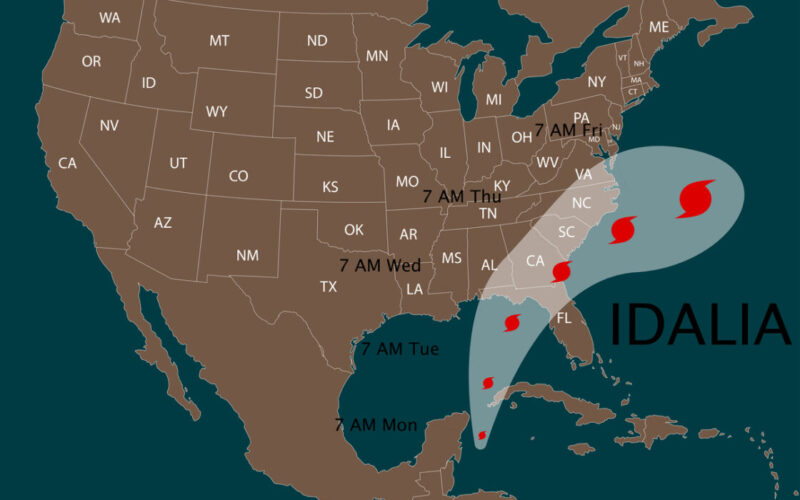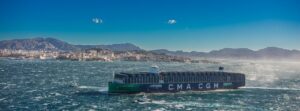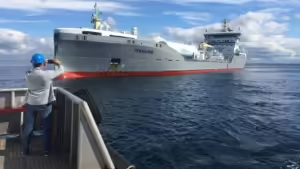Hurricane Idalia has hit Florida’s Big Bend area, producing a catastrophic storm surge, powerful winds, and heavy rainfall, stifling port operations across the region.
The hurricane swarmed from north of Florida, Georgia, and South Carolina on 30 August while on track to move offshore into the Atlantic.
Hurricane #Idalia Advisory 14A: Idalia Rapidly Intensifies Into a Major Hurricane. Catastrophic Storm Surge and Destructive Winds Expected in The Florida Big Bend Region This Morning When Idalia Moves Inland. https://t.co/tW4KeGe9uJ
— National Hurricane Center (@NHC_Atlantic) August 30, 2023
In what was reportedly the most powerful hurricane to come ashore in the region in over a century, the Category 3 storm forced the Ports of Jacksonville, Savannah, Brunswick and Charleston to close on 30 August. All ports announced thereafter that their gates will be reopened on 31 August.
Jaxport announced its Hurricane Port Condition ZULU, set by the U.S. Coast Guard, from the evening of 29 August which stipulates the closure of all the port’s shipping lanes. This has since been lifted on 31 August. The port is now fully operational.
The U.S. Coast Guard had also imposed this condition on the Port of Tampa Bay. However, the port said in a statement that “port staff will continue to work round-the-clock so we can re-open to full operations as soon as safely possible to support the community and region we serve.”
The port is a major hub for gas and other petroleum products in North Florida and its landside liquid bulk operations are critical for residents and responders. Thankfully for the port, its landside operations remained open while the port’s waterways were closed.
“We will work with our fuel terminal operators and partners to ensure gas and other fuels move out of our port and to consumers as long as possible,” Port Tampa Bay said in a statement.
READ: Florida ports ready for Tropical Storm Ian
When the storm passed through South Carolina on 30 August, according to the National Weather Service water levels reached higher than 9 feet at the Charleston Harbor, CNN reported.
Consequently, this became the fifth highest water level ever recorded in history, while only slightly falling behind the levels reached during Hurricane Matthew in 2016 and Hurricane Irma in 2017.
“Major coastal inundation being reported at Edisto Beach and Downtown Charleston,” according to the weather service.
“Water has breached the Charleston Battery. Dunes are breached at Edisto with water flowing under homes and onto roadways.”
The impact has been felt by neighbourhoods within the storm-ridden region, with Reuters reporting on extensive floods that have swamped over highways and residential roads.
This was further compounded by widespread power outages, where according to Florida Governor, Ron DeSantis, roughly 560,000 utility customers had lost electricity at some point amidst the storm.
Moreover, investment bank UBS estimated a projected loss of $9.36 billion on insured property in Florida, Reuters reported.
Just last November, Florida experienced another storm with Category 1 Hurricane Nicole forcing major ports across the region to suspend operations.
Additionally, earlier this year in April, tropical Cyclone Ilsa was the most powerful storm to make landfall off the coast of Western Australia (WA) in over a decade, with wind gusts of more than 250 kilometres per hour.









